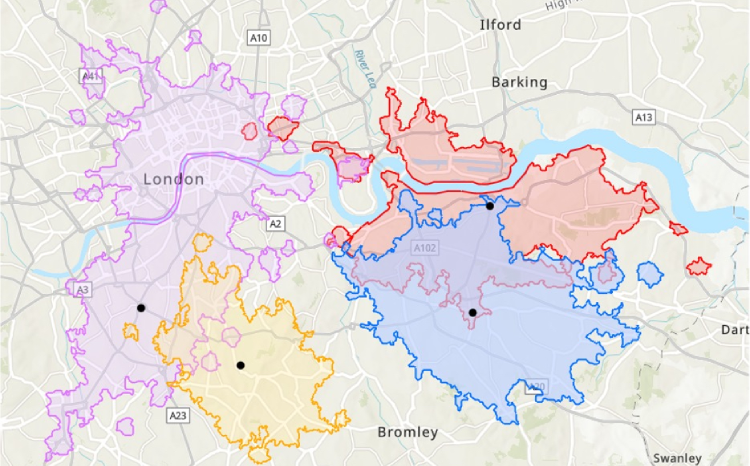Overview
NHS South East London has pinpointed optimal locations for its inaugural women’s and girls’ health hubs through advanced spatial analysis techniques.
Purpose of the Health Hubs
The newly established hubs aim to:
- Enhance access to essential health services
- Address health inequalities affecting women and girls
Key services provided include:
- Menstrual care
- Menopause support
- Pre-conception care
- Awareness programs for breast and cervical cancer
Data-Driven Decision Making
By analyzing service usage and demographic data across six boroughs, the NHS identified strategic locations in Lambeth and Greenwich that would benefit the most patients and enhance health outcomes.
The data analytics team utilized Esri UK’s geographic information system (GIS) software, moving beyond traditional isolated charts and tables to gain deeper insights.
Insights from the Analysis
Alice Gough, programme manager for the women’s and girls’ health hubs, stated:
“Using Esri applications to visualize the burden of conditions like fibroids and endometriosis at a neighborhood level has been invaluable. It highlights unmet needs and helps us shape our community outreach programs and service design around the communities that need it most.”
This innovative approach allowed for the integration of diverse data sets, revealing patterns that informed planning decisions and access issues.
Hub Operations
The Lambeth hub will initially function as a virtual triage model, with plans to evolve into an in-person hub located within an existing GP practice. The new site in Greenwich will be situated within a community health center, alongside sexual, reproductive, and contraception health services.
Comprehensive Data Analysis
The spatial analysis focused on:
- Patient-level service usage for long-acting reversible contraceptives
- Treatments for heavy menstrual bleeding and menopause
Additionally, demographic factors such as deprivation data were examined at the most granular level available, known as lower layer super output areas. Journey time analysis was also conducted to ensure maximum accessibility to the hubs.
Future Plans
Duncan Booth, head of health and social care at Esri UK, emphasized:
“Location is a powerful way of integrating disparate datasets to understand demand and plan new health services. Adopting a geospatial approach is increasingly delivering value across the NHS as more organizations move to digital to help reduce backlogs and increase prevention.”
The women’s and girls’ health hubs will accept referrals from GPs and allow self-referrals, minimizing the need for hospital visits and improving access to timely support. Future plans include incorporating additional data sources, such as cervical screening and referrals to secondary care gynecology services.
